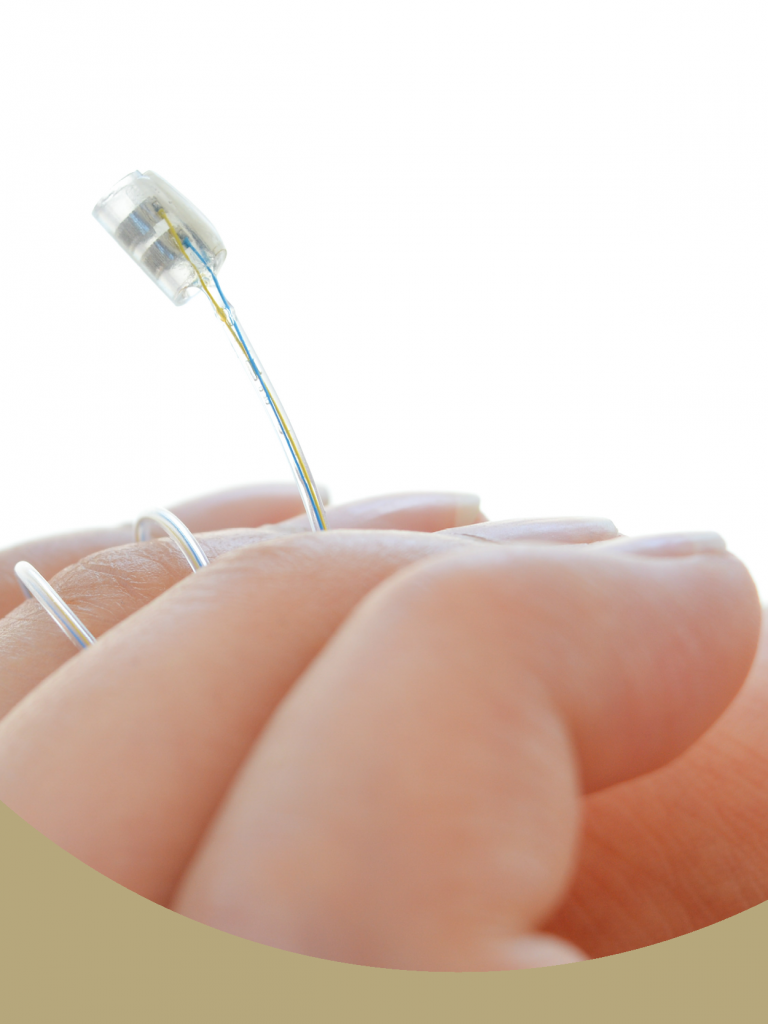Delivering electrical currents to nerves can not only serve to stimulate them, by inducing action potentials that are carried along the nerve and finally activate the end organ (e.g., a muscle). Certain stimulation patterns can also suppress nerve activity, leading to an inhibitory effect on the respective end organs. This is of specific interest for conditions that involve pathological over-activation. For instance, over-active motor nerves can induce muscle spasms, and overactivity of autonomous nerves can dysregulate organ functions.
Blocking peripheral nerves by electric stimulation is tricky, however, and often produces unwanted side effects. DC stimulation, for example, can lead to aggressive chemical byproducts that can damage the tissue or even the electrode hardware. To be able to exploit chronic nerve blocking stimulation for medical therapies, it is therefore essential to find ways for eliminating these side effects.
A group of biomedical researchers from Purdue University in Indiana, USA, and King Saud University in Riyad, Saudi Arabia, as well as from Galvani Bioelectronics, UK, has now developed a stimulation approach that is very effective, yet quickly and fully reversible and does not harm neither tissue nor electrode hardware.
The solution that the authors found relies on a combination of novel electrode technologies and a particular stimulation pattern:
On the technology side, CorTec provided cuff electrodes that were coated with an electrically conducting polymer called PEDOT. The polymer has an especially large electroactive surface area and a sponge-like structure, creating a large ion conductivity and storage capacity, which, in turn, make charge delivery more effective and durable.
For stimulation, the authors devised a special pattern of low frequency alternating currents that had already proved to be effective in a wide range of experimental animal models.
In their recent paper, the authors demonstrated a physiological effect of nerve blocking with this pattern in swine. Stimulating the vagus nerve usually leads to a slowing of breathing. When the authors added their specific nerve blocking stimulation pattern through an additional PEDOT-coated electrode to the stimulated nerve, no slowing of breathing occurred. This effect was completely reversible immediately after terminating the blocking stimulation.
Long-term experiments are still needed to validate the approach. But the results supply good hope that, soon, chronic peripheral neuromodulation will also be able to alleviate medical conditions caused by neural hyperactivity.
Citation:
Muzquiz MI, Richardson L, Vetter C, Smolik M, Alhawwash A, Goodwill A, Bashirullah R, Carr M, Yoshida K. In-vivo application of low frequency alternating currents on porcine cervical vagus nerve evokes reversible nerve conduction block. Bioelectron Med. 2021 Jun 30;7(1):9. doi: 10.1186/s42234-021-00072-w.
Learn more about the possibilities using our °AirRay Electrode technology.
Get in contact and start your next study with the help of our electrodes.
